Archive for August, 2014
-
The Small-Cap Cycle Could Be Over
Eddy Elfenbein, August 25th, 2014 at 10:05 amI want to expand on something I mentioned in Friday’s newsletter. Since March 4, small-cap stocks have been lagging the overall market. This is notable because small-caps had been leading the S&P 500 for over 15 years. It’s been an extremely impressive run.
Let’s look at some numbers. The ratio of the Russell 2000 Index to the S&P 500 reached a low on April 8, 1999. Technical analysts will note that the trough ratio was just a hair below 0.3. Since then, small-caps have shined.
In fact, the impressive behavior of small-caps alters how we ought to look at the great stock bust-up of 2000 to 2009. While it’s certainly true that the S&P 500 reached a peak in March 2000—adjusted for inflation, we still haven’t topped it—but that’s not the whole picture.
The furious rally of the late 1990s was largely driven by tech stocks and large-cap techies in particular. If we exclude a small number of very big stocks, the market’s painful nine years wasn’t quite so painful. When looking at broad market indexes we should always be mindful that a small group can distort the larger picture. Sectors like small-cap value sector have actually done quite well.
That’s why I took notice when the Russell/S&P Ratio reached its last peak on March 4 of this year, almost 15 years to the day after the cycle low. In those 15 years, the Russell 2000 has gained 202% while the S&P 500 is up by just 39%. That’s a five-to-one pounding. But since March 4, the S&P 500 is up 6% while the Russell 2000 is down by 4%. That was enough to bring the ratio down from 0.6450 to 0.5758.
So is the small-cap cycle over? Unfortunately, I can’t say just yet. I thought the cycle had run its course a few times before. Shirley, small-caps couldn’t still lead the market, but they did. Sadly, we may not know if the cycle is truly over for years. It took 30 months for the Russell/S&P Ratio to beat its peak from April 2011. All we can say for certain is that the last six months have witnessed a sharp turn toward big-caps. Historically, once a new cycle starts, it often lasts for many years.
-
The Dull Stock Portfolio
Eddy Elfenbein, August 25th, 2014 at 8:37 amAs long-term readers know, I’m a big fan of dull stocks. These are companies that are highly profitable, very well-run and as dull as dirt. I never understand why but these companies are rarely discussed on TV or the Internet as good investments.
Here’s a list of 52 excellent boring companies:
Company Ticker Middleby MIDD Stepan SCL Raven Industries RAVN Illinois Tool Works ITW Bemis BMS International Flavors & Fragrances IFF The Babcock & Wilcox BWC Harris HRS ACE Limited ACE Colgate-Palmolive CL Flowers Foods FLO Seaboard Corp. SEB Progressive PGR Donaldson DCI Fidelity National Financial FNF First American Financial FAF Vornado Realty Trust VNO Dean Foods DF General Mills GIS Danaher DHR Fastenal FAST Eaton Corporation ETN Safety Insurance Group SAFT W.R. Berkley WRB Loews L Cincinnati Financial CINF Selective Insurance Group SIGI Old Republic International ORI Markel Corp. MKL White Mountains Insurance Group WTM W.W. Grainger GWW United Stationers USTR Fair Isaac FICO Graco GGG FactSet Research Systems FDS WEX Inc. WEX Abbott Laboratories ABT Becton, Dickinson and Company BDX Deluxe Corp. DLX Sysco Corporation SYY Eaton Vance EV Eli Lilly and Company LLY SEI Investments SEIC Amphenol APH Expeditors International EXPD Varian Medical Systems VAR Tupperware Brands TUP Hubbell Inc. HUB-B Cummins CMI Public Storage PSA McCormick & Company MKC Daily Journal DJCO I’m sure you’ve heard of many, but some are barely known. Hubbell is up nearly 50 fold since 1980, yet no analysts currently follow it. Stepan has increased its dividend every year for 46 consecutive years. Seaboard has a little over one million shares outstanding and a $2,900 per share price tag.
You’ll also notice several insurance stocks. I’m often impressed by how many great long-term winners have been insurance stocks.
Please note that I’m not recommending these stocks as buys. I’m saying that they’ve had long histories of being well-run.
Morning News: August 25, 2014
Eddy Elfenbein, August 25th, 2014 at 6:47 amEuropean Shares Lifted by Prospect of More ECB Stimulus
German Business Climate Drops for Fourth Month on Risks
Draghi Pushes ECB Closer to QE as Deflation Risks Rise
Central Bankers’ New Gospel: Spur Jobs, Wages and Inflation
Fed’s Yellen Remains Mum on Timing of Rate Change
Burger King in Merger Talks With Canada’s Tim Hortons
Roche to Expand Respiratory Role With InterMune Purchase
Carmaker BYD Sees Shares Rebound After 8% Fall
Arianespace Seeks Answers as Satellites Miss Their Orbits
Family Dollar Said Open to Dollar General With Store Concessions
Sonoco To Buy Weidenhammer Packaging Group
Taiwan’s Wei Family to Buy Cable TV Operator CNS for $2.4 Billion
Roche to Buy U.S. Biotech Firm InterMune For $8.3 Billion
Howard Lindzon: Google…When expensive is Cheap and Cheap is Expensive…and How I Hunt
Epicurean Dealmaker: All Hail and Farewell, the Trophy Kids
Be sure to follow me on Twitter.
Ross Stores Soars
Eddy Elfenbein, August 22nd, 2014 at 10:47 amGreat day for Ross Stores ($ROST). The shares have been up by as much as 7.3% in today’s trading. This has been a very nice turnaround for them.
CWS Market Review – August 22, 2014
Eddy Elfenbein, August 22nd, 2014 at 7:12 am“There is a danger of expecting the results of the future
to be predicted from the past.” – John Maynard KeynesLadies and gentlemen, I have a very important announcement to make: the Summer Swoon is officially over!
Yep, it’s true. From July 24 to August 7, the S&P 500 shed 3.94%. The market’s low came right as the Dow barely touched its 200-day moving average. But since then, the market has rallied impressively. In two weeks, U.S. equities have gained more than $900 billion in value. The S&P 500 has closed higher in eight of the last ten sessions. On Thursday, the index closed at 1,992.37, which is its highest all-time close. Believe it or not, we’re now within striking distance of 2,000.
Think about this: The stock market has nearly tripled in less than five and a half years. That’s simply amazing. As long-time followers know, our Buy List has done even better.
We’ve had more good news for our Buy List this week. Ross Stores, the deep discounter, just did our favorite two-step—the beat-and-raise polka. Medtronic, the large-cap medical devices company, beat earnings as well. Finally, on Thursday, eBay broke out with a 5% gain on news that it might spin off its PayPal unit. I’ll have full details later on.
We’ve also had some more promising general economic news. The Commerce Department said that housing starts were up sharply last month, and last week’s report on Industrial Production was also quite good. Some folks at the Fed are even talking about raising rates sooner than expected (I doubt it will happen). I want to be careful to put this in proper perspective, though. There are signs that the economy is improving, but we’re still far from healthy. I’ll run down the economic outlook in just a bit, and I’ll highlight what Buy List stocks look especially good right now. But first, let’s look at two big shifts that have been quietly underway on Wall Street.
The Shift Toward Large-Caps and Growth
The Summer Swoon caught a lot of folks off guard. Investors need to understand that summertime investing can be weirdly interesting because a lot of Wall Street bigwigs head off to the Hamptons or Martha’s Vineyard. As a result, trading volume drops off, and smaller events can have an outsized impact.
To boil it down, the market was tripped up by “headline risk,” which refers to political events not related to the market. Every night we’ve seen troubling stories about conflicts in places like Ukraine, Syria and Gaza. Naturally, this has scared investors, especially since volatility had been so low during the spring. I’ve mentioned this statistic before, but it bears repeating: The S&P 500 went 62 days in a row without a single close greater or less than 1%. The market hadn’t had a streak that long in nearly 20 years.
But what’s caught my eye now is that this rally has been a party for the big boys. Large-cap stocks are outperforming, and the smaller guys are lagging behind. While the large-cap S&P 500 finally topped its high from July 3, the small-cap Russell 2000 is still lagging at 4% below its July high. In fact, the Russell 2000 reached its all-time high close on March 4. On July 3, the Russell ran up to its previous high, falling short by just 0.5 points. Technical analysts are always on the lookout for “failures” like this, as they may portend more bad news. Since March 4, the S&P 500 is up more than 6%, while the Russell is down 4%. That’s a surprisingly wide gap between the two indexes.
Large-caps aren’t the only favored sector. Growth stocks are also doing well. This is a big change from the spring. In March and early April, the stock market turned sharply against Growth stocks in favor of Value. But since April 11, the Vanguard Growth ETF ($VUG) is up by 12.5%, and the relative performance of Growth has gotten even stronger lately.
What do these two market shifts, large-cap and growth, mean for the market? It’s hard to say exactly, but I think they reflect greater confidence in the economy. When people get scared, they turn to Value, so the newfound love for Growth probably reflects investor optimism. The last GDP report was certainly encouraging, and it bolsters the view that the economy is improving. Another bit of evidence was last Friday’s Industrial Production report. In July, Industrial Production rose by 4%. That’s twice the rate that economists were expecting. Industrial Production is up 5% in the last year.
The turn to large-caps is a bit more complicated. The big difference between large- and small-cap indexes is that large-cap stocks tend to get more of their revenue from overseas. The smaller stocks are skewed towards domestic manufactures. As a result, the large-cap surge could reflect more optimism about Europe and other foreign markets. For example, Ford Motor ($F) recently turned a profit from their European operations, which was earlier than expected.
The U.S. dollar is also improving against many currencies (bond yields in Europe are crazy low). A stronger dollar is typically correlated with large-caps outperforming small-caps. This makes sense since a stronger currency has a tendency to impede smaller domestic manufacturers.
The positive economic news is clearly influencing the Federal Reserve. On Wednesday, the Fed released the minutes from their July meeting. The minutes suggested that some Fed members are beginning to think that interest rates may have to go up sooner than expected. I’m skeptical. Of course, looking at the minutes from any Fed meeting is an extended exercise in indefinite adjectives; “some” members say this, while “many” members say that. We never know exactly how many members feel a certain way on a given issue.
I suspect the majority on the FOMC is in favor of letting short-term rates ride for several more months. Earlier this week, we learned that inflation continues to be very subdued. The CPI rose by just 0.1% in July. That’s the lowest rate in five months. There are few things that scare central bankers more than inflation, so this news gives the Fed a little more breathing room to keep rates low. For its part, the bond market is still holding up. The 10-year yield recently closed at its lowest level in 15 months. Until there’s more evidence of inflation, Janet Yellen and her friends at the Fed are quite content to keep rates near the floor. This is good for the economy, the stock market and Growth-oriented stocks. Now let’s turn to some of our recent earnings reports.
Medtronic Beats by a Penny
On Tuesday, Medtronic ($MDT) reported fiscal Q1 earnings of 93 cents per share. That was one penny better than expectations. Quarterly revenues rose 4.7% to $4.27 billion, which was $20 million better than expectations. Medtronic had its strongest growth for U.S. medical devices in five years.
I was pleased to hear the company reaffirm its commitment to the Covidien deal. Medtronic also stood by its full-year earnings guidance range of $4.00 to $4.15 per share. I like this company a lot, but I’m going to keep our Buy Below at $67 per share, which is fairly tight. At the current price, MDT is going for less than 16 times this year’s estimate. Medtronic is an ideal stock for conservative investors.
Ross Stores Is a Buy up to $77 per Share
After the closing bell on Thursday, Ross Stores ($ROST) reported very good numbers for their fiscal Q2. For May, June and July, the deep discounter earned $1.14 per share. That was six cents better than Wall Street’s consensus. It was also well above Ross’s own guidance of $1.05 to $1.09 per share. I should add that Ross tends to be fairly conservative with its guidance. Quarterly revenue rose by 7%, which was also better than expectations.
The results from Ross tell us that consumers are willing to spend money if they see good deals. I was very pleased to see the company’s operating margins rise to a company record. In the earnings report, Ross gave us earnings guidance for Q3 and Q4. For the current quarter, they see earnings ranging between 83 and 87 cents per share. The Street was at 86 cents. For Q4, they project earnings between $1.05 and $1.09 per share. Wall Street was at $1.12 per share. Bear in mind that Q4 is a biggie for a retailer like Ross.
Ross’s CEO said, “Our second-quarter sales performed at the high end of our expectations as today’s value-focused consumers continued to respond to our wide assortment of competitive name-brand bargains. Merchandise gross margin was above plan, which, coupled with strong expense controls, enabled us to deliver quarterly earnings per share that were above the high end of our guidance.”
Ross raised guidance for the entire year. Previously, they said they expected earnings to range between $4.09 and $4.21 per share. Now they see earnings coming in between $4.18 and $4.26 per share. Last week, I said that I wanted to see better guidance from Ross before I would touch the Buy Below price. Well, we got our evidence and business is going well. I’m raising our Buy Below on Ross Stores to $77 per share.
Will eBay Ditch PayPal?
Shares of eBay ($EBAY) spiked upward on Thursday on rumors that the company is considering spinning off its PayPal subsidiary. If you recall, Carl Icahn had been pressuring eBay earlier to make such a move. The company repeatedly shot down the idea, but PayPal makes a lot of money, and it could be very lucrative for eBay to let them go.
On Thursday, the online magazine “The Information” said that eBay has been telling prospective candidates for PayPal’s new CEO that a spinoff could be in the works. Honestly, that doesn’t strike me as that big of a deal. It seems quite natural that the spinoff topic would be addressed in a job interview. That doesn’t mean it will happen. Publicly, I expect eBay will still speak out against any spin-off.
What’s more interesting to me is how strongly the market reacted to the idea. The market clearly wants PayPal spun off, and that will cause shareholders to pressure the board to make a deal happen. I’ve been following stocks long enough to know that if a board of directors thought wearing clown shoes would help their stock, they’d do it before sunrise. Look for a deal to happen at some point, but it may take time. In the meantime, I’m raising our Buy Below on eBay to $58 per share.
Before I go, let me highlight a few Buy List stocks that look especially good right now. I really like Ford Motor ($F). I think the automaker will make another run at $18 very soon. Cognizant Technology Solutions ($CTSH) is also a very good buy if you’re able to get it below $47 per share. Shares of Qualcomm ($QCOM) pulled back sharply after the last earnings report. It’s coming back quickly, and I think that trend will continue. My Buy Below for QCOM is $79, but if you can pick up shares below $77, then you got a good deal.
That’s all for now. Next week is the final trading week for August. The year is nearly two-thirds over. The next big econ report will come on Thursday when the government revises the Q2 GDP report. The initial report came in at 4%, which surprised a lot of people. Not many folks had been expecting such a strong number. Now we have some more trade data, so the updated figure could be different. On Friday, we’ll get the report for Personal Income. This is usually a reliable metric for how well the overall economy us doing. Be sure to keep checking the blog for daily updates. I’ll have more market analysis for you in the next issue of CWS Market Review!
– Eddy
Morning News: August 22, 2014
Eddy Elfenbein, August 22nd, 2014 at 6:59 amDollar Poised for Biggest Weekly Gain Since January
Gold Near Two-Month Low; Set For Weekly Drop on Interest Rate Fears
Europe Fears Banks Lack Cash Cushion to Cover Bad Loans
Russian Aid Convoy Without Consent Deemed Invasion by Ukraine
LSE Unveils $1.6 Billion Rights Issue for Frank Russell Deal
Bank of America’s $16 Billion Mortgage Settlement Less Painful Than It Looks
Raymond James S&P 500 Forecast Dashed by V-Shaped Rebound
US Casual Wear Giant Gap to Launch 40 Stores in India
McDonald’s: How The Fast-Food Symbol of America Has Fallen Prey to Politics in Russia
Co-operative Bank Narrows First-Half Losses and Shrinks Work Force
Twitter Tops All in Culture and Values, Employees Say
How Jackson Hole Became Such an Important Economic Talking Shop
Cullen Roche: 2 Bullish Macro Indicators
Ben Carlson: It’s Not a Chase For Yield, It’s a Chase For Fees
Be sure to follow me on Twitter.
All-Time High
Eddy Elfenbein, August 21st, 2014 at 6:44 pmWe did it! The S&P 500 rallied to a new all-time high close today of 1,992.37. We’re now inches away from S&P 500 2,000. The index first broke 200 almost 29 years ago. The S&P 500 has now rallied on eight of the last ten days.
Morning News: August 21, 2014
Eddy Elfenbein, August 21st, 2014 at 7:46 amManufacturing Slows From Europe to China on Trade Risks
Russia Shuts Four McDonald’s Restaurants Amid Ukraine Tensions
Austria’s Raiffeisen Bank Says Huge Russian Business Is Safe From Sanctions
Carney Seen Holding Sway as BOE Dissenters Stray From Pack
Gold Erodes Ahead of housing Data, Yellen
Fed Officials Prepared for Faster Rate Increase as Data Improve
Fed is Torn Over the Timing for Boosting Interest Rates
World’s Biggest Wealth Fund Slows Emerging Market Investment
Bank of America Expected to Settle Huge Mortgage Case for $16.65 Billion
Sears Posts Large Loss as Revenue, Margins Decline
HP Boosted by PCs as Whitman Seeks Growth in Other Units
Berkshire Defies Short Seller by Adding to CB&I Stake
UK Retail Sales Rise Less Than Expected in July
Cullen Roche: There Isn’t $10.8 Trillion “Stuffed Under Mattresses” Because of QE
Joshua Brown: The Chase for (no) Yield
Be sure to follow me on Twitter.
Horrifying Bear Market Ends
Eddy Elfenbein, August 20th, 2014 at 4:31 pmThe vicious bear market that rocked Wall Street for a full two weeks has finally come to an end. Measuring from close to close, the S&P 500 plunged for a massive 3.94 loss between July 24 and August 7.
The S&P 500 closed today at 1,986.51 which is just 0.07 below the high from July 24. Thanks to dividends, the S&P 500 Total Return has gained 0.12% over the same time.
Target Slashes Estimates
Eddy Elfenbein, August 20th, 2014 at 10:46 amThe stock market is just about perfectly flat this morning. The market has done very well lately and traders are waiting for the Fed minutes which are due to be released at 2 pm today. The general view is that QE is on a very definite track and will be wrapped up later this year. The move in interest rates, however, is still up in the air. Perhaps there will be more signs in these minutes.
I’ve been keeping a close eye on Target (TGT), the big box retailer. It’s been an excellent company until having an awful year in 2013. The retailer botched its expansion into Canada, and their credit card data was breached. The shares fell from $73 to $55, but despite the low price, I’ve still shied away.
This morning, Target announced earnings of 78 cents per share for its second quarter which was a penny below estimates. They also cut their full-year range from $3.60 to $3.90 per share down to $3.10 to $3.30 per share. That means the stock currently goes for more than 18 times the top-end of their expectations. That’s no bargain.
Ross Stores (ROST) is due to report tomorrow. The shares got a big lift yesterday when the stock rallied 4%. The company expects earnings between $1.05 and $1.09 per share. I’ll be curious to see if they update their full-year forecast of $4.09 to $4.31 per share.
- Tweets by @EddyElfenbein
-
-
Archives
- April 2024
- March 2024
- February 2024
- January 2024
- December 2023
- November 2023
- October 2023
- September 2023
- August 2023
- July 2023
- June 2023
- May 2023
- April 2023
- March 2023
- February 2023
- January 2023
- December 2022
- November 2022
- October 2022
- September 2022
- August 2022
- July 2022
- June 2022
- May 2022
- April 2022
- March 2022
- February 2022
- January 2022
- December 2021
- November 2021
- October 2021
- September 2021
- August 2021
- July 2021
- June 2021
- May 2021
- April 2021
- March 2021
- February 2021
- January 2021
- December 2020
- November 2020
- October 2020
- September 2020
- August 2020
- July 2020
- June 2020
- May 2020
- April 2020
- March 2020
- February 2020
- January 2020
- December 2019
- November 2019
- October 2019
- September 2019
- August 2019
- July 2019
- June 2019
- May 2019
- April 2019
- March 2019
- February 2019
- January 2019
- December 2018
- November 2018
- October 2018
- September 2018
- August 2018
- July 2018
- June 2018
- May 2018
- April 2018
- March 2018
- February 2018
- January 2018
- December 2017
- November 2017
- October 2017
- September 2017
- August 2017
- July 2017
- June 2017
- May 2017
- April 2017
- March 2017
- February 2017
- January 2017
- December 2016
- November 2016
- October 2016
- September 2016
- August 2016
- July 2016
- June 2016
- May 2016
- April 2016
- March 2016
- February 2016
- January 2016
- December 2015
- November 2015
- October 2015
- September 2015
- August 2015
- July 2015
- June 2015
- May 2015
- April 2015
- March 2015
- February 2015
- January 2015
- December 2014
- November 2014
- October 2014
- September 2014
- August 2014
- July 2014
- June 2014
- May 2014
- April 2014
- March 2014
- February 2014
- January 2014
- December 2013
- November 2013
- October 2013
- September 2013
- August 2013
- July 2013
- June 2013
- May 2013
- April 2013
- March 2013
- February 2013
- January 2013
- December 2012
- November 2012
- October 2012
- September 2012
- August 2012
- July 2012
- June 2012
- May 2012
- April 2012
- March 2012
- February 2012
- January 2012
- December 2011
- November 2011
- October 2011
- September 2011
- August 2011
- July 2011
- June 2011
- May 2011
- April 2011
- March 2011
- February 2011
- January 2011
- December 2010
- November 2010
- October 2010
- September 2010
- August 2010
- July 2010
- June 2010
- May 2010
- April 2010
- March 2010
- February 2010
- January 2010
- December 2009
- November 2009
- October 2009
- September 2009
- August 2009
- July 2009
- June 2009
- May 2009
- April 2009
- March 2009
- February 2009
- January 2009
- December 2008
- November 2008
- October 2008
- September 2008
- August 2008
- July 2008
- June 2008
- May 2008
- April 2008
- March 2008
- February 2008
- January 2008
- December 2007
- November 2007
- October 2007
- September 2007
- August 2007
- July 2007
- June 2007
- May 2007
- April 2007
- March 2007
- February 2007
- January 2007
- December 2006
- November 2006
- October 2006
- September 2006
- August 2006
- July 2006
- June 2006
- May 2006
- April 2006
- March 2006
- February 2006
- January 2006
- December 2005
- November 2005
- October 2005
- September 2005
- August 2005
- July 2005
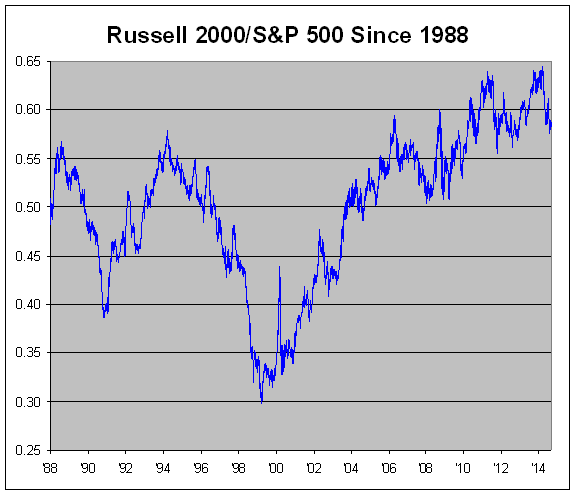
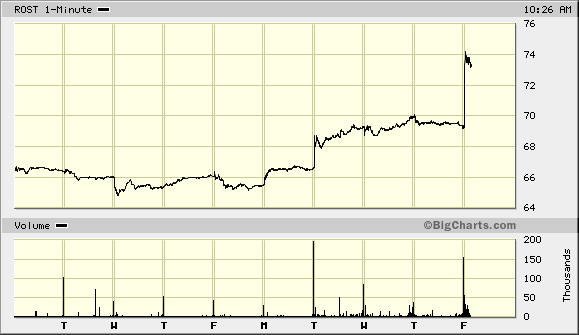

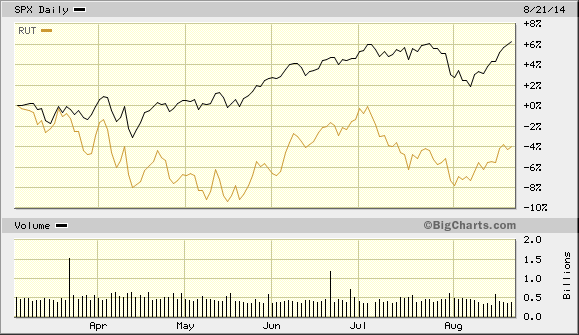
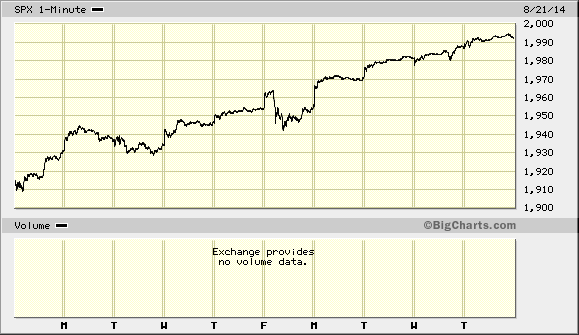
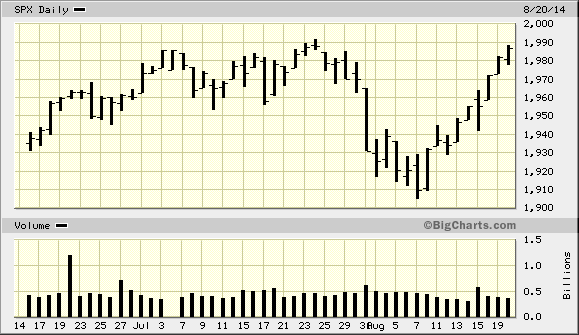
 Eddy Elfenbein is a Washington, DC-based speaker, portfolio manager and editor of the blog Crossing Wall Street. His
Eddy Elfenbein is a Washington, DC-based speaker, portfolio manager and editor of the blog Crossing Wall Street. His